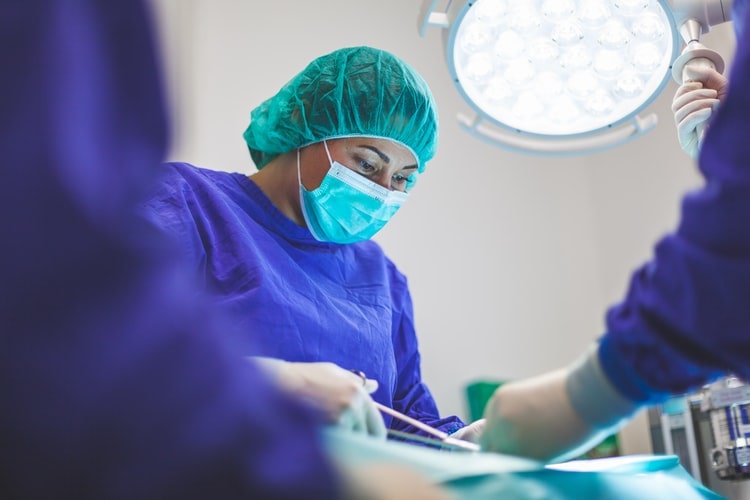There are different types of pancreatic surgery that can be performed to treat various kinds of pancreatic diseases such as cancer.
Pancreas is an important organ which is located in the upper abdomen, behind the stomach. This organ is responsible for releasing or secreting certain enzymes that help in digestion of food, especially fats and protein. Pancreas work closely with other organs such as the liver and bile ducts that secrete other digestive enzymes. It also releases some hormones that is involved in management of blood sugar.
The most commonly performed surgery for pancreatic cancer is Whipple’s procedure. It is a complex surgery in which the head or wide part of the pancreas, that is adjacent to duodenum, the first part of the small intestine is removed. The surgery also includes removing the duodenum along with some part of the common bile duct, gallbladder, and at times a portion of the stomach. Then the surgeon reconnect the remaining part of the intestine to the bile duct and pancreas.
Removal of pancreas can be done using laparoscopic and robotic techniques. These are minimally invasive procedure in which incisions of smaller size are made instead of the larger ones, as in the case of conventional surgery. This offers several benefits, such as faster recovery, less blood loss, and less post-operative pain and discomfort.
The surgery to treat pancreas is a major operation that requires proper post-operative care for the patient. With minimally invasive techniques, the duration of hospital stay and recovery has reduced. But, there are still risks of complications and other problems during recovery.
On the day of the surgery, the patient is prepared for the operation and given general anaesthesia so that they remain unconscious during the procedure. The duration of surgery will depend on the kind of procedure being performed and severity of cancer. After the operation, the patient is shifted to the recovery room where the medical staff will monitor them closely. From recovery room, patient is shifted to a general ward room for rest of the recovery at hospital.
The patient usually stays in the hospital for around four to ten days following the surgery, depending on the surgery type that was performed. During the hospital stay, pain killers and others medications are administered by the medical staff help with the initial post-surgery discomfort.
The hospitals offer a variety of room categories including single room, twin bed sharing or triple bed sharing with varying price range. The best hospital for pancreatic surgery in India provide options for private room, deluxe room and others on the surgical floor. These hospitals are state-of-the-art facilities with world-class infrastructure. They cater to large volume of domestic and international patients on a regular basis. Internationals patients are provided special services keeping in mind the needs and requirements of an overseas patient and their family. There is a lounge room with global cuisine, internet services, translators and several other facilities.
Every surgical procedure has certain risks and complications associated with it. Some potential pancreatic surgery complications include:
The most common complication associated with pancreatic surgery is the leakage of pancreatic juices from the surgical incision.
Other surgery related complications such as bleeding or an infection of the surgical site are also there.
Although, most post-surgical complications are not fatal, they require a close monitoring by the health care team involved in the surgery.
There can be some long-term complications after pancreatic surgery such as post-operative difficulties with digestion system that can lead to weight loss in some patients. It is considered to be a normal consequence of pancreatic surgery for certain people.
Pancreatic surgery may also increase the risk of developing diabetes if the operation involved removal of many insulin-producing cells in the pancreas. However, these are rare complication that may occur in some people who had normal blood sugar before the surgery. People who are diagnosed with diabetes before the pancreatic surgery may even have improvement in their condition.
In some cases, pancreatic surgery can potential be a life-saving procedure as it may help extend the life span of person with cancerous tissue. Knowing the side effects and complications involved with surgery can help you prepare better and allow making an informed choice about the treatment plan.
Changes in the digestive system
Pancreatic surgery may also involve many organs that make up the digestive system. Therefore, a patient can expect to experience some changes to the gastrointestinal tract. After the surgery, patients can initially have small amounts of food at a go. They may also experience problems like diarrhoea temporarily. The medical care team including the nutrition specialist will work out a diet plan that meets all the nutritional needs of the person. Sometimes, special supplements are also recommended by them to help with better digestion of the food and to make sure that the body is getting the nutrients required for a good health.










